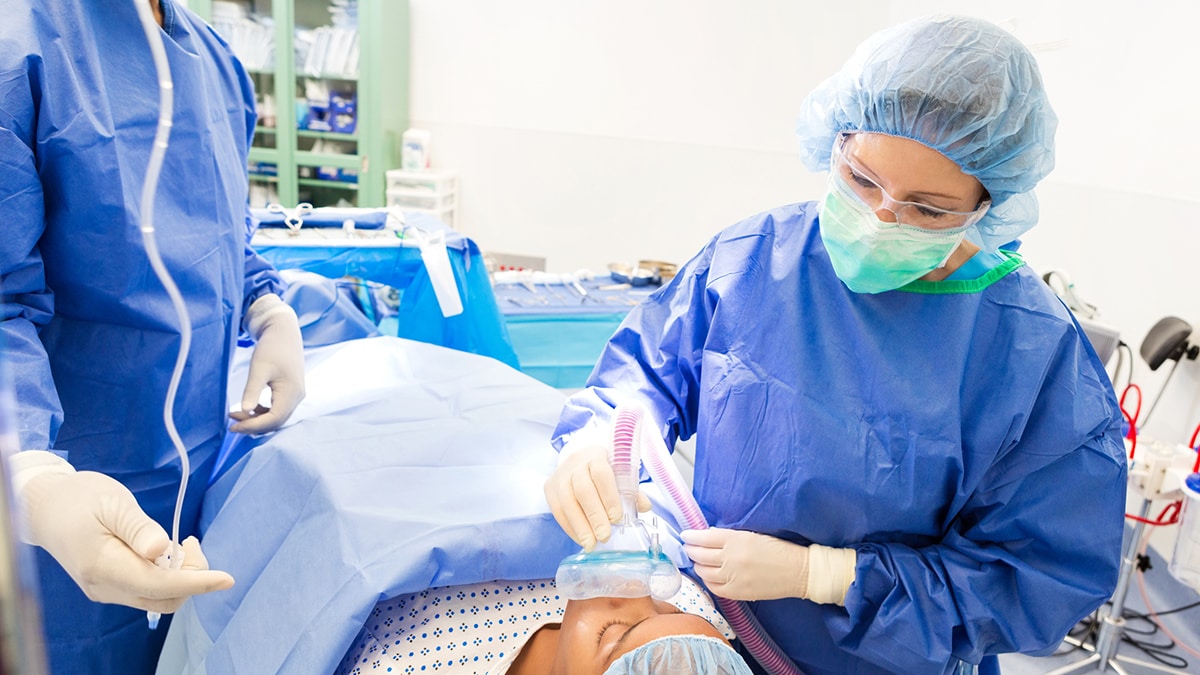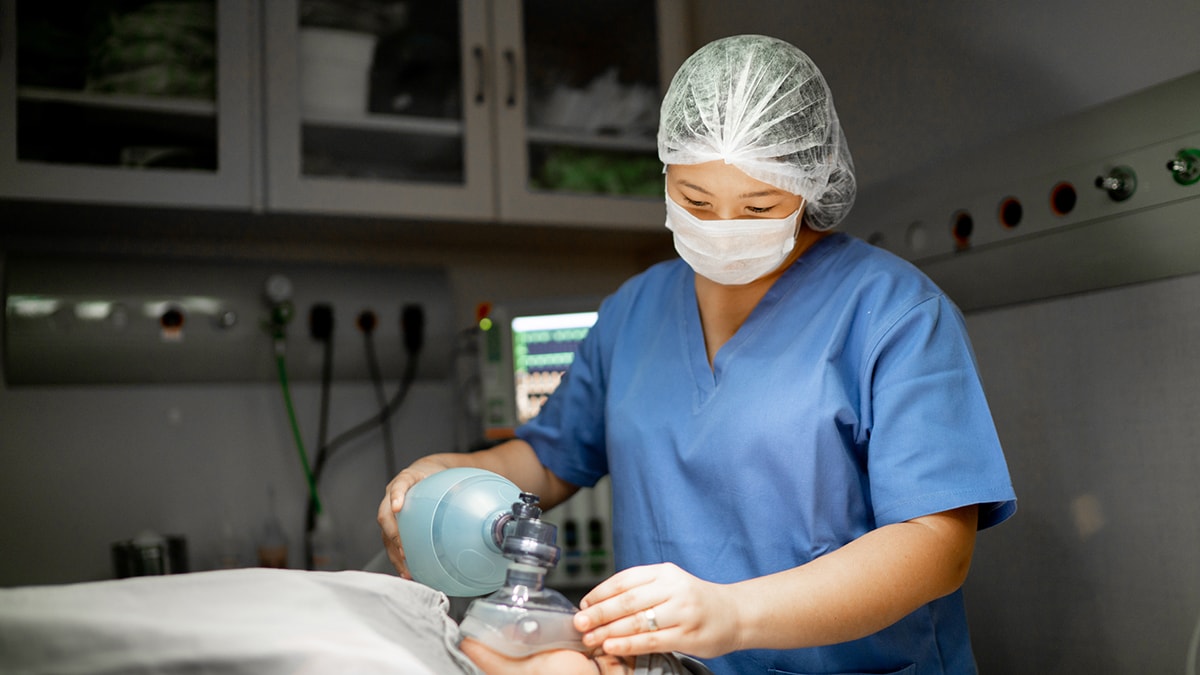Key points
- Workers heavily exposed to anesthetic gases may have increased infertility and miscarriage.
- Modern control technology for waste anesthetic gases can be very effective at reducing workers’ exposure.
- While hospitals typically have installed control technologies, smaller facilities (including dental and veterinary offices) might face challenges implementing this technology.

Understanding anesthetic gases

Anesthetic gases are used to keep patients unconscious during surgery. "Waste anesthetic gases" can leak into the air of operating rooms or can be exhaled by patients recovering from anesthesia. Common anesthetic gases include nitrous oxide, halothane, enflurane, isoflurane, desflurane, and sevoflurane.
Why I should be concerned about exposure
Several studies show that both men and women exposed to large amounts of waste anesthetic gases might have reduced fertility and pregnant women increased risk of miscarriage.
Hospitals are better now at preventing anesthetic gases from leaking into operating rooms during surgery, which reduces the exposure of workers.
It may be challenging to prevent anesthetic gas leaking from masks when administering anesthesia to children or animals. This is due to increased movement among these patients.
Who is at risk
Anyone working in an operating or recovery room with an anesthetized patient (human or animal) may be exposed to anesthetic gases.
This includes anesthesiologists, dentists, veterinarians, nurse anesthetists, operating-room personnel, recovery-room nurses, other recovery-room personnel, and surgeons.
How workers may be exposed to anesthetic gases
Workers are most likely to be exposed to waste anesthetic gases:
- In operating rooms (ORs) without automatic ventilation or scavenger systems
- In ORs with poor automatic ventilation or scavenger systems
- In recovery rooms where gases are not properly vented or scavenged
- When leaks occur in the anesthetic breathing circuit
- When anesthetic gases escape during hookup of the system
- When anesthetic gases escape during disconnection of the system
- When anesthetic gases escape from a patient's mask
What I can do to reduce or eliminate exposure
Follow the recommendations in the NIOSH guidance on waste anesthetic gases to reduce or eliminate your exposure as much as possible. Share this guidance with your employer. Make sure your employer is following the most recent guidance for protecting workers from exposure to anesthetic gases.
Scavenger systems are devices used to gather and remove waste anesthetic gases from treatment rooms. These systems must be maintained and monitored to make sure they are working properly. Your employer should be able to tell you how scavenging systems and other controls are maintained.
If exposure cannot be avoided during pregnancy, respirators can reduce the amount of certain chemicals that workers breathe in. However, respirators must be used correctly to be effective. Not all types of respirators are effective at preventing inhalation for all chemicals. Charcoal masks or surgical masks are not effective at preventing inhalation of anesthetic gases. Learn more about respirators and pregnancy.
Resources
Getting help
If you work around anesthetic gases or patients who are recovering from anesthesia, talk to your supervisor or occupational safety officer. You can ask them about the safety practices they use to control waste anesthetic gases.
For information on the Pregnant Workers Fairness Act, please see resources from the U.S. Equal Employment Opportunity Commission (EEOC) website.
You can also talk to your doctor about potential hazards at work.
Additional resources
- NIOSH guidance on waste anesthetic gases
- OSHA - Anesthetic Gases: Guidelines for Workplace Exposures
